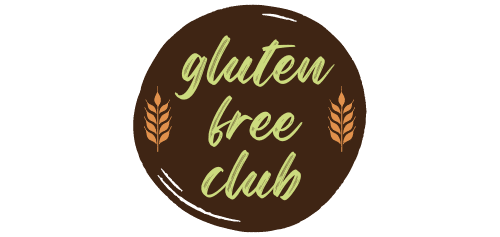What Dairy Products are Gluten Free?
All dairy that is unaltered (ie. plain, full-fat, no flavorings added) including milk, butter, yogurt, sour cream, and cheese are naturally gluten free.
Excluding low-fat milk which is naturally gluten-free, it is the flavored, low fat, fat-free, or processed/spreadable variations that can contain added ingredients like gluten to help thicken or stabilize the product. To identify potential sources of hidden gluten look for these words on the label; wheat ingredients, modified food starch, or maltodextrin.
Yogurt
Flavorings like those added to yogurt can include gluten in various forms. When reading the label look for (and avoid); granola, artificial color, flavoring, and chocolate/candies. As well, certain types of ‘fruit on the bottom’ brand yogurts can contain gluten-based thickeners.
Cottage Cheese
The majority of cottage cheese and ricotta brands are gluten-free and are made from just milk, salt and lemon juice or vinegar. Although it’s when they are made from vinegar that you need to clarify on the label what type of vinegar was used in its manufacturing (ie. malt vinegar contains barley, which does contain gluten).
Is Shredded Cheese Gluten-Free?
Shredded cheese packages usually contain a white powdery substance mixed with the cheese shreds to prevent it from sticking together. Large manufactures like Kraft and Sargento (in U.S & Canada) do not use wheat as an anti-clumping agent in their shredded cheese.
Powdered cellulose, calcium carbonate, and potato starch are used as anti-clumping agents. Of the three, powdered cellulose can be made from wheat, but if it was used it would be identified on the product’s label.
Is Blue Cheese Gluten-Free?
Blue cheeses include; Stilton, Blue Shropshire, Blue Cheshire, Blue Wensleydale, Buton Blue, Blue Vinney, Danish Blue, Roquefort and Gorgonzola. Traditionally the molds that are in blue cheese were grown on rye grains, malt or wheat-based dextrose (all of which contain gluten). These days, blue cheese is rarely derived from these methods, however it is still prudent to read the label.

However, those who are ultra-sensitive to gluten should still avoid blue cheese. Instead, use feta or goat cheese which has a similarly sharp and tangy flavor.
Cross-Contamination Potential
Grocery stores that buy large wheels or blocks of cheese cut the cheese into smaller quantities to repackage and sell. If they cut on the same surface that was used for making sandwiches, gluten can contaminate the cheese. Or, if slicing machines that were used to slice deli meats (that contain gluten) also are used to slice cheese without properly being cleaned, gluten contamination can occur.
If you are extremely sensitive to gluten, you may want to avoid buying cheese that was repackaged this way. Look for cheeses that were only packaged at the manufacturer (supermarkets will re-wrap their cut cheeses in thin plastic wrap, compared to the thick plastic used at the manufacturer).
| NATURALLY GLUTEN FREE | MAY OR MAY NOT BE GLUTEN FREE – BE SURE TO CHECK THE LABEL |
| MILK | |
| Whole Milk | Flavored Milk (like chocolate, strawberry*) |
| 2% Milk | Flavored Milk (like chocolate, strawberry*) |
| 1 % Milk | Flavored Milk (like chocolate, strawberry*) |
| Skim Milk | Flavored Milk (like chocolate, strawberry*) |
| Cream | |
| SOUR CREAM | |
| 14% Sour Cream (full fat) | 7% Sour Cream |
| Fat Free Sour Cream | |
| Light Sour Cream | |
| YOGURT | |
| Plain Yogurt (full fat) | Light Yogurt |
| Fat Free Yogurt | |
| Fruit on the Bottom Yogurt | |
| Flavored Yogurt | |
| Yogurt & Granola | |
| COTTAGE CHEESE | |
| Plain Cottage Cheese (full fat) | Light Cottage Cheese |
| Fat Free Cottage Cheese | |
| Ricotta (full fat) | Light Ricotta |
| CHEESE | |
| All hard cheeses (except Blue Cheese) | Blue Cheese |
| Spreadable Cheese | |
| Processed Cheese Slices | |
| Plain Goat Cheese | Flavored Goat Cheese |
| Plain Cream Cheese | Light/Fat Free Plain Cream Cheese |
| Flavored Cream Cheese | |
| Plain Feta | Flavored Feta Cheese |
*From Nestlé: “Our Nestlé Nesquik No Sugar Added variety, Nesquik Strawberry flavor, Nesquik Very Vanilla, Nesquik Double Chocolate and Nesquik 67oz Chocolate are produced on a line that also produces a product that contains gluten. For this reason, we are unable to say that those products are 100% gluten free, as there may be a chance of cross contamination. However, our Nesquik Chocolate flavored powder in 15, 30, and 56 ounce sizes are 100% gluten free.”

This was helpful, thank you.